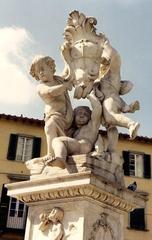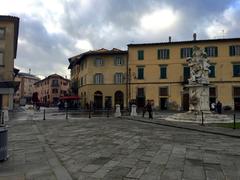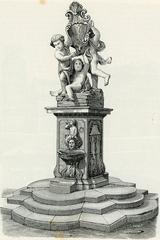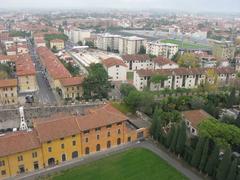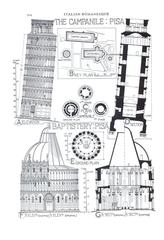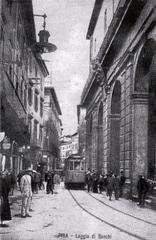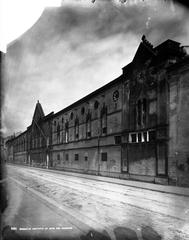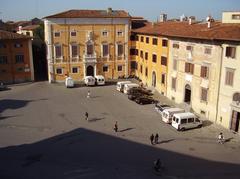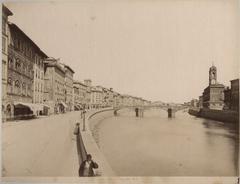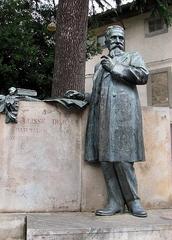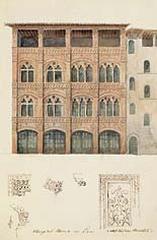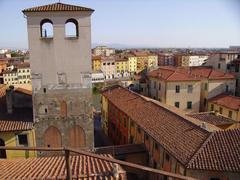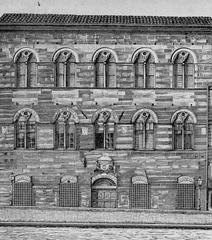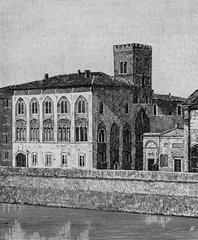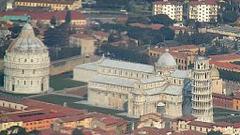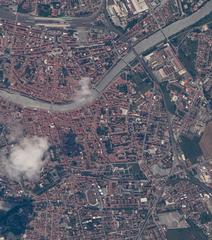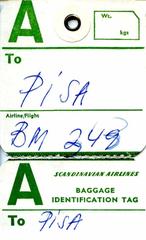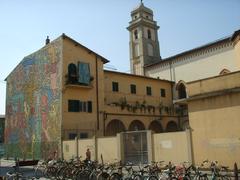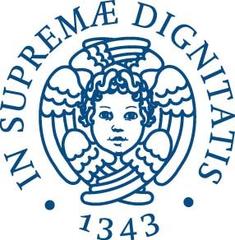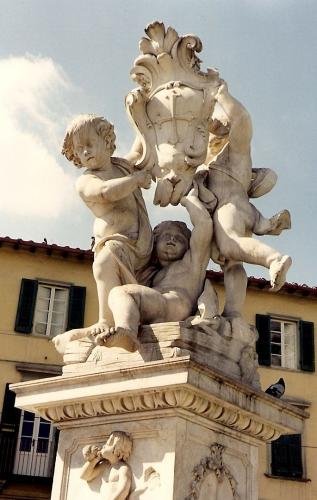
Fontana dei Putti in Pisa: Visiting Hours, Tickets, History, and Tips
Date: 25/07/2024
Introduction
Nestled within the historic Piazza del Duomo in Pisa, Italy, the Fontana dei Putti is an enchanting blend of artistic ingenuity and historical significance. Often overshadowed by the iconic Leaning Tower of Pisa, this 18th-century fountain, created by Giovanni Antonio Cybei in 1765, stands as a testament to the evolving nature of public art and taste. This comprehensive guide aims to illuminate the history, cultural impact, and visitor essentials of the Fontana dei Putti, ensuring you make the most of your visit to this remarkable monument. From its controversial origins and critical reception to its modern-day resurgence in popularity, the Fontana dei Putti has navigated the tides of time with an enduring charm that captivates both art enthusiasts and casual tourists alike (Finestre sull’Arte).
Table of Contents
- [Introduction](#introductionintroduction)
- [History of Fontana dei Putti, Pisa](#history-of-fontana-dei-putti-pisahistory-of-fontana-dei-putti-pisa)
- [Origins and Creation](#origins-and-creationorigins-and-creation)
- [Early Reception and Criticism](#early-reception-and-criticismearly-reception-and-criticism)
- [Attribution Controversies](#attribution-controversiesattribution-controversies)
- [Threats of Demolition](#threats-of-demolitionthreats-of-demolition)
- [Modern Recognition and Popularity](#modern-recognition-and-popularitymodern-recognition-and-popularity)
- [Cultural Impact](#cultural-impactcultural-impact)
- [Preservation Efforts](#preservation-effortspreservation-efforts)
- [Visitor Information](#visitor-informationvisitor-information)
- [Visiting Hours](#visiting-hoursvisiting-hours)
- [Ticket Prices](#ticket-pricesticket-prices)
- [Accessibility](#accessibilityaccessibility)
- [Travel Tips](#travel-tipstravel-tips)
- [Best Times to Visit](#best-times-to-visitbest-times-to-visit)
- [Guided Tours](#guided-toursguided-tours)
- [Photographic Spots](#photographic-spotsphotographic-spots)
- [Nearby Attractions](#nearby-attractionsnearby-attractions)
- [Leaning Tower of Pisa](#leaning-tower-of-pisaleaning-tower-of-pisa)
- [Piazza del Duomo](#piazza-del-duomopiazza-del-duomo)
- [Local Restaurants and Shops](#local-restaurants-and-shopslocal-restaurants-and-shops)
- [FAQ](#faqfaq)
- [What are the visiting hours for Fontana dei Putti?](#what-are-the-visiting-hours-for-fontana-dei-puttiwhat-are-the-visiting-hours-for-fontana-dei-putti)
- [How much are the tickets for Fontana dei Putti?](#how-much-are-the-tickets-for-fontana-dei-puttihow-much-are-the-tickets-for-fontana-dei-putti)
- [Are there guided tours available?](#are-there-guided-tours-availableare-there-guided-tours-available)
- [Conclusion](#conclusionconclusion)
- [Visuals and Media](#visuals-and-mediavisuals-and-media)
History of Fontana dei Putti, Pisa
Origins and Creation
The Fontana dei Putti, also known as the Fountain of the Putti, is a significant sculptural work located in the Piazza del Duomo in Pisa, Italy. Created in 1765 by Giovanni Antonio Cybei, a prominent sculptor of the 18th century, Cybei’s work is characterized by its anti-classical style, which was revolutionary for its time. The fountain features three colossal putti (cherubic figures) holding the arms of the primatial and the city, embodying an 18th-century figurative culture that favored asymmetry and perpetual motion (Finestre sull’Arte).
Early Reception and Criticism
Despite its artistic merit, the Fontana dei Putti did not receive immediate acclaim. Alessandro Da Morrona, in his work “Pisa Illustrata nelle Arti del Disegno” (1787-1793), dismissed the fountain as devoid of merit, except for the quality of the marble and the craftsmanship of the base. This critical indifference reflected the changing tastes of the time, which were moving towards a more classical and archeological aesthetic, as seen in the works of contemporaries like Canova (Finestre sull’Arte).
Attribution Controversies
The authorship of the Fontana dei Putti has been a subject of debate for many years. Although Girolamo Tiraboschi, in 1786, attributed the work to Cybei, this attribution was lost over time. Subsequent guides and essays, such as Bellini Pietri’s “Guide to Pisa” (1913) and Giorgio Castelfranco’s 1931 essay, mistakenly credited the base’s creator, Giuseppe Vaccà, as the author of the entire fountain. It wasn’t until 1990, when Professor Paolo Roberto Ciardi published the original contract from 1763, that Vaccà was officially recognized as the author of the base. However, the discovery of an autograph by Cybei in the late 1990s, in which he claimed to have executed the group for the Pisan fountain, reignited the debate (Finestre sull’Arte).
Threats of Demolition
The Fontana dei Putti faced numerous threats of demolition throughout its history. In the late 19th century, during the period of national unification and the subsequent enthusiasm for neo-medieval aesthetics, the Association for the Embellishments of the Piazza del Duomo proposed replacing the fountain with a statue of Buscheto, the architect of the Duomo. This proposal was ultimately unsuccessful. Another significant threat came in the early 20th century when Archbishop Pietro Maffi of Lombardy, who arrived in Pisa in 1905, considered replacing the fountain. However, the non-election of Cardinal Maffi to the papal throne in 1922 saved the fountain from demolition (Finestre sull’Arte).
Modern Recognition and Popularity
In recent years, the Fontana dei Putti has experienced a resurgence in popularity, largely due to its picturesque location and the rise of social media. Tourists frequently include the fountain in their photographs of the Leaning Tower of Pisa, using it as a scenic backdrop and a focal point for their compositions. This modern appreciation highlights the fountain’s dynamic relationship with its surroundings and its ability to engage viewers from various perspectives (Finestre sull’Arte).
Cultural Impact
The Fontana dei Putti has also made its mark in popular culture. It has been featured in various media, including the Japanese anime series “Lupin III,” which further cemented its status as an iconic landmark. The fountain’s journey from being a neglected piece of art to a celebrated cultural symbol underscores the evolving nature of public taste and the enduring appeal of artistic innovation (Finestre sull’Arte).
Preservation Efforts
Efforts to preserve the Fontana dei Putti have been ongoing, particularly in light of its historical significance and newfound popularity. Restoration projects have aimed to maintain the fountain’s structural integrity and aesthetic appeal, ensuring that it remains a cherished part of Pisa’s cultural heritage for future generations (Finestre sull’Arte).
Visitor Information
Visiting Hours
The Fontana dei Putti is accessible at all times as it is located in an open public space. However, the best times to visit are early in the morning or late in the afternoon to avoid the crowds.
Ticket Prices
There is no ticket required to visit the Fontana dei Putti as it is part of the public Piazza del Duomo. However, tickets are required for other attractions in the Piazza.
Accessibility
The Piazza del Duomo is wheelchair accessible, making it easy for all visitors to enjoy the Fontana dei Putti.
Travel Tips
Best Times to Visit
To fully appreciate the Fontana dei Putti without the hustle and bustle of large crowds, consider visiting during the off-peak tourist seasons, such as late autumn or early spring.
Guided Tours
Guided tours are available through various tour operators in Pisa, providing in-depth historical context and interesting anecdotes about the Fontana dei Putti and other landmarks in the Piazza del Duomo.
Photographic Spots
For the best photographs, try capturing the fountain from multiple angles, especially with the Leaning Tower of Pisa in the background. Early morning light can provide a beautiful, soft illumination.
Nearby Attractions
Leaning Tower of Pisa
Just a stone’s throw from the Fontana dei Putti, the iconic Leaning Tower of Pisa is a must-visit. Ensure to book tickets in advance if you plan to climb the tower.
Piazza del Duomo
Explore the entire Piazza del Duomo, also known as the Square of Miracles, which includes other historic sites like the Pisa Cathedral and the Baptistery.
Local Restaurants and Shops
After exploring the Piazza, enjoy some local cuisine at nearby restaurants or shop for souvenirs in the bustling area.
FAQ
What are the visiting hours for Fontana dei Putti?
The Fontana dei Putti is accessible at all times as it is located in an open public space.
How much are the tickets for Fontana dei Putti?
There is no ticket required to visit the Fontana dei Putti.
Are there guided tours available?
Yes, guided tours are available through various tour operators in Pisa.
Conclusion
In conclusion, the Fontana dei Putti is not merely a fountain but a dynamic historical artifact that encapsulates the shifting artistic trends and public perceptions over centuries. From facing threats of demolition to becoming a beloved subject of social media photography, the fountain has indeed seen a remarkable journey. Its strategic location within the Piazza del Duomo makes it an essential stop for anyone visiting Pisa, offering a unique blend of artistic, historical, and cultural insights. Whether you are intrigued by its anti-classical style, its symbolic significance, or simply its visual charm, the Fontana dei Putti promises a rewarding experience. As you explore the Piazza del Duomo, take a moment to appreciate this often-overlooked gem and reflect on the intricate narratives it embodies (Finestre sull’Arte).
